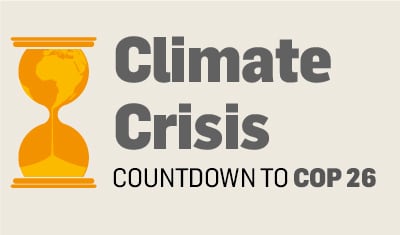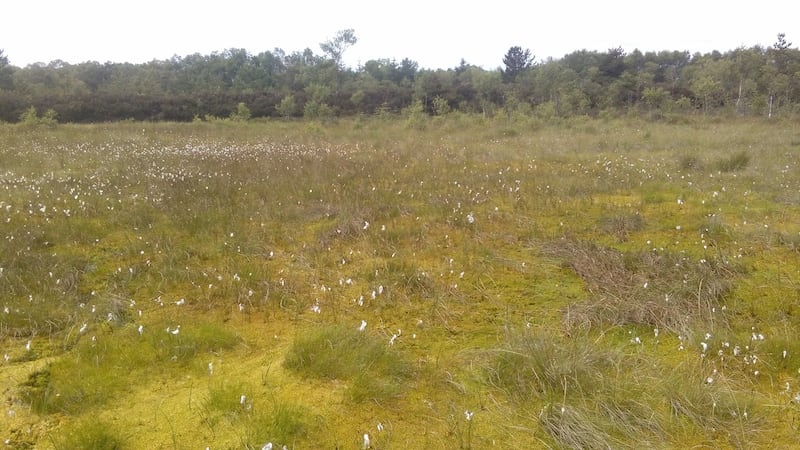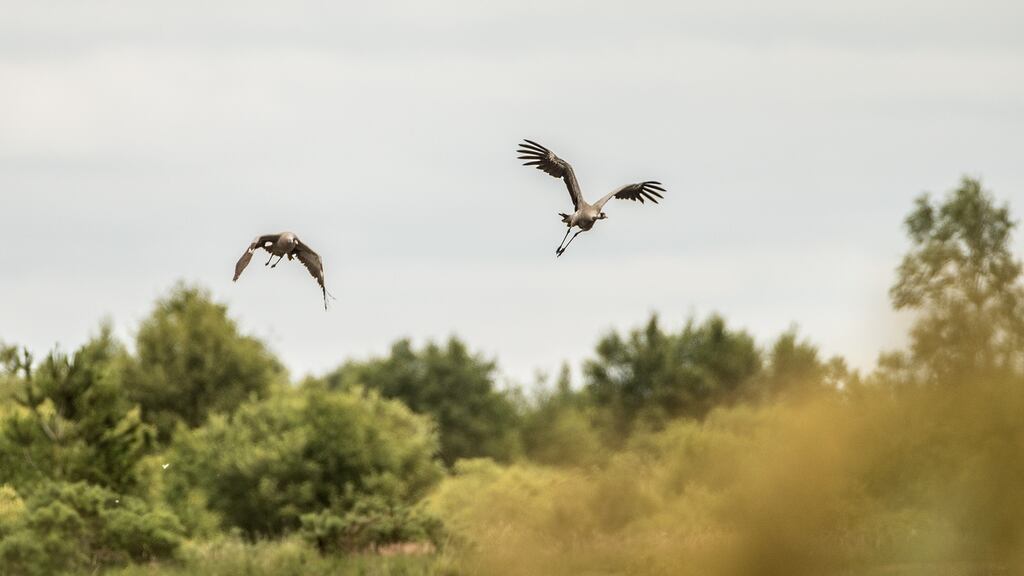The idea that “nature-based solutions” (NbS) can simultaneously address both the climate and biodiversity crises is a very attractive one; rich in win-win-win scenarios.

So much so that NbS – it has inevitably generated an acronym – has become a dominant narrative of environmental discourse. NbS is a driver behind the UN's decision to declare this the Decade on Ecosystem Restoration, and behind massive international afforestation programmes such as the Bonn Challenge.
More locally, you've probably heard stories like this one, about the multiple ecosystem services that can come back into play when ecological restoration is done on a sound scientific and social basis.
If we restore a bog by rewetting it, nature will bring back threatened native plants and animals; it will improve water quality and reduce flood damage; it will end carbon emissions from the degraded peat, and (maybe, eventually) draw down carbon from the atmosphere; and this project can have demonstrable benefits for the physical and mental health of local communities, and attract tourist business.
And that can all be true, in specific cases. A remarkable Irish example, the Abbeyleix Bog Project, to give just one example, has already ticked most of these boxes in less than 20 years' exemplary restoration work.
There is certainly something comforting in the notion that nature can heal the wounds our culture has inflicted on our planetary life-support system. But experts in this field advise that we should be aware of letting warm and fuzzy feelings replace scientific analysis of very tricky problems.
Restoration ecology, and ecological engineering, have certainly advanced much faster as sciences than anyone expected 20 years ago, but their best literature recognises that each project faces often unpredictable challenges, and that climate change is rapidly making restoration more difficult.
Climate specialists stress that we should be especially wary of exaggerated claims by vested interests for the benefits of NbS in mitigating climate change.
Two recent papers warn that we need to be rigorous in measuring the effectiveness of NbS, and in assessing their appropriateness in different ecological and social settings. They also call out abuse of the concept as a dodge to avoid painful but necessary action in cutting industrial and agricultural greenhouse gas emissions.
Writing in Ecosystem Services this year, Cian White, Marcus Collier and Jane Stout, all of Trinity College Dublin, agree that "in practice, afforestation will be one of a portfolio of actions to address climate change". But they continue: "Due to land use and socio-economic constraints, afforestation could realistically result in global annual sequestration rates of one gigatonne of carbon, a significant yet small proportion of the greater than 50 gigatonnes of annual emissions."

An article last year by led by Franziska Tanneberger of the highly regarded Greifswald Mire Centre in Advanced Sustainable Systems, to which Niall Ó Brolcháin of NUIG contributed, gives an upbeat assessment of the climate and other benefits of peatland restoration in the European Union. Again, however, the authors point to the limits as well as the strengths of NbS as a climate strategy: "They play a vitally important role to mitigate and adapt to climate change, but are not a substitute for a rapid fossil fuel phase-out and must not delay urgent action to decarbonise our economies."
White’s paper points out two glaring but critical gaps in the NbS literature to date: no-one had hitherto clearly defined what we mean by “nature-based”; meanwhile, we often talk about “solutions” without defining the precise nature of the problem to be solved.
They argue that two criteria are needed for a project to qualify as an NbS: “A solution to a well-defined problem is achieved; and [that] ecosystem services make the largest contribution to the solution.”
This leads them to a detailed analysis of claims about the benefits of NbS projects, from planting urban trees to constructing wetlands. To be absolutely clear, they fully recognise that these measures are often very beneficial. Indeed, Jane Stout is one of the creators of the All-Ireland Pollinator Plan, which very successfully promotes mostly small actions by local communities to boost biodiversity.
But the authors insist that, if we are going to build NbS into major climate and biodiversity strategies, we must learn to be much more precise about quantifying their impacts on problem-solving, in comparison to the impacts of traditional – and innovative – technological strategies. We must also be careful not to assume that an NbS that is effective on a small local scale can automatically be scaled up regionally, much less globally.
Cian White told The Irish Times why they had adopted this stance: “I think the literature is over-enthusiastic about NbS potential and so was looking for NbS that have a sound evidence base.”
It’s certainly increasingly evident that NbS need to be submitted to the same scrutiny as technological measures, and climate downsides, as well as upsides, highlighted. Rewetting bogs, for example, generally releases methane, a very powerful greenhouse gas, as well as reducing carbon emissions, though the balance is usually climate-positive, as the Tanneberger paper demonstrates. Others point out that short-rotation forestry schemes can release much more carbon than they ever sequester.
White says the development of accurate natural capital accounting is vital to revealing the bottom line of every climate mitigation proposal, and he believes that NbS can play only a minor, though still important, role in this battle, relative to technological solutions.
“If we were to halt deforestation, accounting for one gigatonne of emissions in 2016, and include the reasonable afforestation target of one gigatonne, forestry could mitigate roughly 4 per cent of 2016 emissions. To put that in context, energy accounts for some 75 per cent of emissions, so scaling the clean energy technologies we have (solar, wind, nuclear, hydro, hydrogen) is essential.”
This is perhaps not a message that many environmentalists want to hear, but it surely deserves a hearing.
He also draws attention to the use of NbS in greenwashing by big corporations.
“There is a lot of international money in the carbon offsetting market, where the language of NbS has recently been adopted for forestry and land use offsets.
"We need traceability and independent verification. Carbon offsets are legitimate when emissions cutting is not possible and could be useful for generating funding for nature-related projects. Unfortunately, the unregulated offsets are very cheap. So Shell can afford to buy offsets to sell 'carbon neutral' fossil fuels. This is a nature-based solution for Shell's business model, but not for climate change."
PANEL
Short-term removals versus long-term solutions
John Sweeney, professor emeritus at Maynooth University and contributor to the Intergovernmental Panel on Climate Change reports, also insists on the need for forensic examination of the numerous NbS proposals at the upcoming Cop26 meeting in Glasgow. He puts this in the context of recent claims by the Irish Farmers' Association, in its partially successful efforts to amend the Climate Bill, that carbon already sequestered in Irish landscapes should be credited against current emissions from agriculture.
“My big thing has always been the language, you need to be careful here. We need to identify the difference between short-term carbon removals and long-term solutions.
“Farmers talk about ‘removal’ of carbon by hedgerows and so on, but this shifts into an argument for carbon credits for rye grass that is only in the process of being eaten and then re-emitted as methane.
“And soil carbon storage will take decades or centuries to make a difference, but it’s being shoved on to accounts as a big ‘origin green’ benefit.
“There is a place for forestry in global climate strategy, but in Ireland it’s not a nature-based solution. When you plough up land for forestry you create a net carbon source, but no one seems to be keen to recognise that offset.
“There are rules in the IPCC as to what can be counted as carbon sequestration, and I’ve badgered the Government to apply them here, but I’ve no faith in their backbone, they won’t stand up against the IFA.”
“We are jumping into alternative energy schemes without doing a full climate cost/benefit analysis.”
The benefits of NbS projects can undoubtedly often be remarkable, especially for biodiversity, and inspire deep community engagement in environmental issues. But overstating their impact in the climate arena, where they are not a global gamechanger, will only discredit them in public opinion when they fail. NbS advocates do best when they under-promise, and over-deliver.
Paddy Woodworth is author of Our Once and Future Planet: Restoring the World in the Climate Change Century (Chicago 2013), and vice-chair of the steering committee of Natural Capital Ireland








